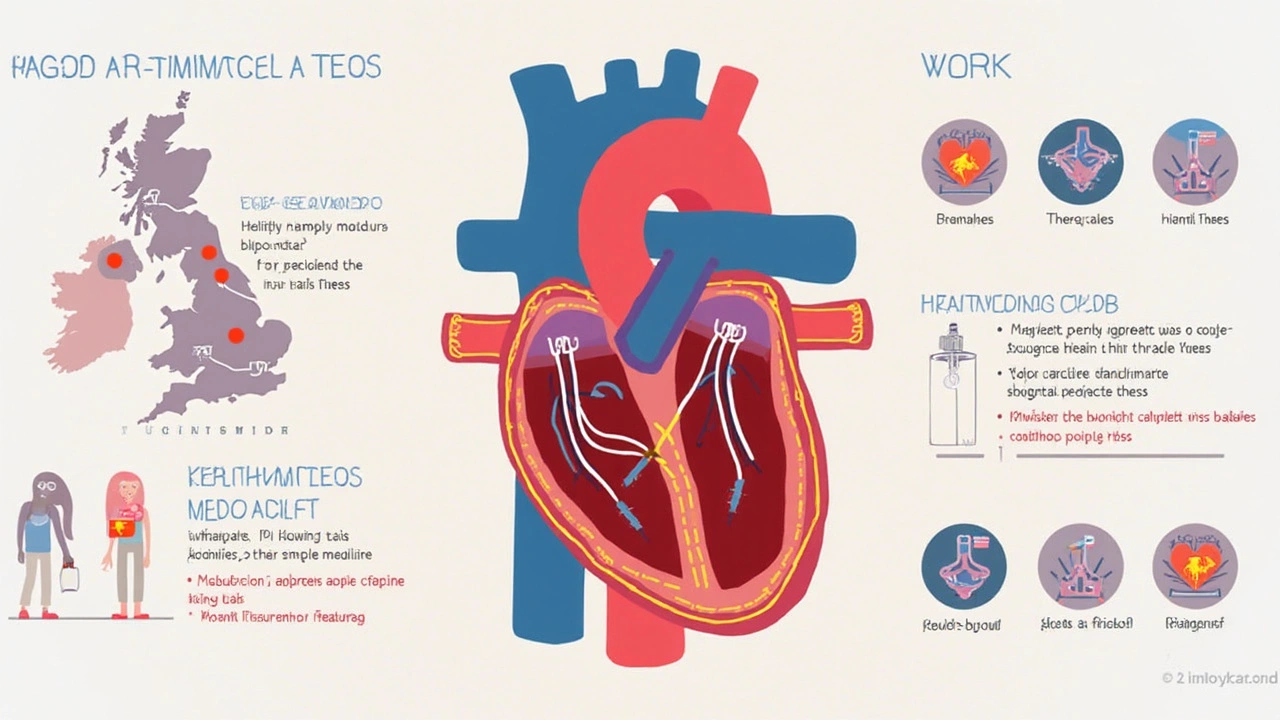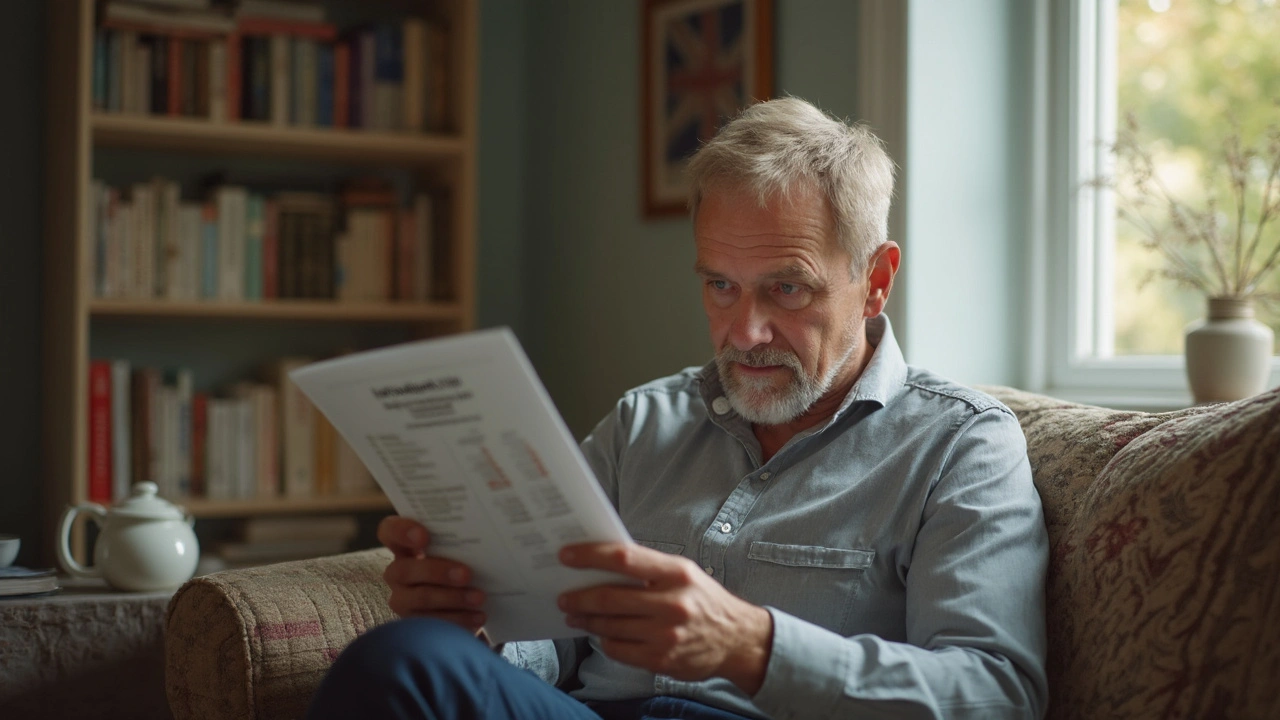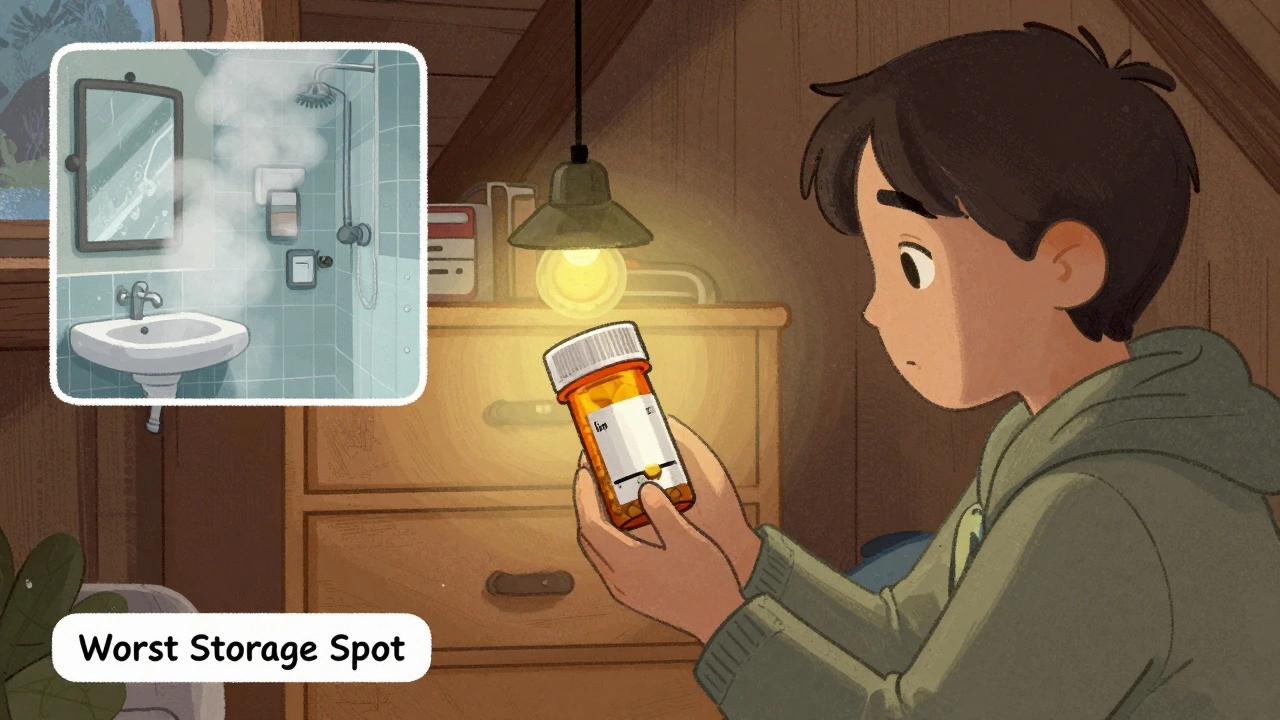Vastarel makes you stop and think: is heart pain ever just a warning, or a call for a real fix? This little pill, with its sharp blue box, is the go-to for millions who dread chest pain's squeeze. Most folks know it as trimetazidine, a drug designed to armor the heart during a shortage of oxygen. But what do you really know about it? The truth is, most people who take it have never asked how it works, or what surprises could lurk inside a medicine so common you might not even question its safety. That's where things get interesting—and, if you’re someone who wants more than what the leaflet says, you’re not alone.
What Is Vastarel, and Why Is It Prescribed?
For starters, Vastarel is no new kid on the block. Since the 1970s, trimetazidine has been prescribed in Europe, South America, parts of Asia, and even Africa, but it’s less common in the United States. Its main hero move: helping folks who deal with stable angina—the medical word for chest pain linked to heart disease. This isn’t about stopping a heart attack in its tracks or fixing a blocked artery; think of it as giving your heart a buff and extra stamina when oxygen runs thin. Doctors usually hand out Vastarel to people who feel tightness or pressure in their chest during exertion, usually with coronary artery disease. By stabilizing how your heart uses energy, it aims to reduce the frequency and severity of those scary chest twinges.
Here's the science, made simple. Most heart cells run on fatty acids as their main fuel. But in an oxygen crisis, like blocked arteries, burning fatty acids is rough on the heart. Vastarel nudges cells to burn more glucose instead. This is like switching your car from diesel to electric when you’re running low on fuel—it just runs smoother, stresses the engine less, and eases the burden during shortages. It's a bit different from drugs called beta blockers or nitrates, which control heart rate or blood vessel width. Vastarel isn’t a rescue pill, so don’t count on it for sudden chest pain. Instead, it’s a helper in the daily grind of ongoing heart problems.
What makes it unique? Unlike some heavy-duty heart drugs, this one is usually friendly to blood pressure—no steep drops or feeling dizzy when you stand. It also doesn’t slow your heart like the old-school blockers do. For many, this means fewer side effects and an easier fit into daily life. Doctors sometimes use Vastarel alongside other heart medications. In France and Russia, for example, it’s a household name—it was even in the World Anti-Doping Agency’s spotlight after a few athletes tested positive for trimetazidine! They banned it for sports because it could give an unfair energy boost, even though it has little effect on normal athletic training.
The recommended dose is usually 35mg twice a day for adults, taken with meals. Still, always trust your specialist for exact instructions, since your situation could need extra tweaking, especially if your kidney function isn’t top-notch. Probably not the best choice if you have shaking hands (parkinsonism) or movement disorders—a safety warning added after French authorities flagged rare but real risks.
| Country | Vastarel Approval | Common Use |
|---|---|---|
| France | Yes | Heart angina |
| Russia | Yes | Angina, vertigo |
| UK | Yes (restricted) | Specific heart conditions |
| USA | No | N/A |
So, while Vastarel isn’t ubiquitous everywhere, for those cardiology veterans familiar with it, the drug’s not without some star power—given carefully to a particular crowd.

Risks, Side Effects, and Stories From the Real World
On the surface, Vastarel sounds pretty gentle. Most patients use it for years without major mishaps. But don’t let the mild-mannered talk fool you—side effects, though rare, can get your attention. People usually tolerate this medicine, but don’t ignore any new twitch, shake, or walking trouble. One French study found a handful of patients developed symptoms that looked suspiciously like Parkinson’s—shaky hands, slow movement, and stiffness. That led to a change in official advice: anyone with real-deal Parkinson’s disease, or with unexplained movement issues, should avoid trimetazidine.
Other possible side effects target the stomach: nausea, vomiting, stomach pain, and diarrhea sometimes pop up. A very small number of users report headaches, skin rashes, or feeling tired. The tiredness part seems odd, given its energy-boosting rep in sports, but this isn’t an amphetamine—it’s more about helping heart cells than powering up the whole body. Allergic reactions are rare but possible, so if you break out in hives or have trouble breathing, that’s an immediate red flag. Doctors keep a close eye on older patients or those with weak kidneys, since that’s when side effects creep up more.
One patient story that often circulates among cardiology nurses: an elderly man who’d been walking fine suddenly developed a strange shuffling gait. His family linked it to his new heart meds. Once Vastarel was discontinued, his walking went right back to normal. While these stories aren’t common, they do underline how individual reactions demand respect. Don’t ever shrug off odd changes—always call your doctor if something doesn’t feel right.
What about the super rare problems? On very unusual occasions, blood counts have dipped or liver function has shifted. If you’re ever told to have routine labs, don’t skip them. Vastarel rarely interacts with other drugs in a dangerous way, but if you’re on a big mix of meds—like blood thinners or epilepsy drugs—your doctor will double-check for safety just the same.
Misuse in sports has put the spotlight on Vastarel, even though it’s not a muscle-builder or an EPO-like blood-booster. In 2022, Russian Olympic athletes Maria Abakumova and Nadezhda Sergeeva both tested positive and faced suspensions, despite claiming they took the drug for medical reasons. World Anti-Doping Agency (WADA) classifies **Vastarel** under "metabolic modulators," a reminder that this heart medicine can go places beyond the pharmacy shelf.
"When prescribing trimetazidine, careful consideration must be given to the patient’s neurological status." — Professor Alain Cohen, European Heart Journal, 2023.
Children and pregnant women are a hard no, just to be safe—there’s not enough data on what could happen, so docs steer well clear. If you have kidney disease, or you’re over 75, expect your doctor to start extra low and watch you for trouble. Fact is, even a well-known drug needs new respect when used in vulnerable groups.
Any unusual symptom or unexplained change in how you feel—especially odd twitches or trouble walking—deserves a check-in, not a shrug. Keep up with any blood tests or follow-ups; don’t just depend on how you feel.

Practical Tips: How to Use Vastarel Wisely—and What You Can Do
For anyone starting on Vastarel, life shouldn’t feel much different, and that’s actually the point. This isn’t a quick fix or an energizer for weekdays. If you skip doses or stop suddenly because you “feel better,” it could come back to bite you—angina is sneaky that way. Take it on schedule, with food, and ideally at the same time every day to build habits.
Some users notice they stop reaching for that nitroglycerin tablet as often, reporting fewer angina attacks. That’s fantastic, but you still need to have your rescue medicine handy. Never use Vastarel as a replacement for emergency drugs. If your symptoms get worse or show up at rest, you need your doctor—fast.
If you travel or have disruptions in your routine, use smartphone alarms or old-school pillboxes—whatever works. Document how you feel day-to-day, especially in the early weeks. This isn’t just good advice; it actually helps your doctor figure out what’s working (or not).
Worried about food and drink? There’s no major interaction with caffeine, alcohol, or most common foods, but go gentle on the booze for your heart’s sake. Hydration does matter, though—if you start getting dizzy, check your water intake and blood pressure. Take special care with kidney function: older folks or people with kidney trouble hold onto the drug longer, so doses need adjusting to sidestep side effects.
Driving and using machinery is still fair game for most people, unless you get very dizzy or your vision blurs. If you ever feel sluggish or “jittery” after starting the medicine, don’t push it—stop and tell your doctor.
Doctors will ask you to check your blood pressure every so often, even though the drug shouldn’t lower it directly. Watching your cholesterol, blood sugar, and weight also stays on the to-do list—no medicine gets you out of lifestyle basics. Heart drugs like Vastarel work best when they’re just one part of your plan. Diet, exercise, sleep, stress, and keeping up with other meds make all the difference.
If you’re one of those people who uses wearable fitness trackers, notice if your average heart rate or daily steps change. This might seem nerdy, but tools like these help spot differences in your daily pattern that could clue doctors in on side effects or improvements.
Here’s a table with a quick cheat sheet of different heart meds and how they compare with Vastarel:
| Drug Name | Common Use | Main Side Effect | Extra Consideration |
|---|---|---|---|
| Vastarel (Trimetazidine) | Stable angina | Rare movement disorders | Avoid in Parkinson's |
| Metoprolol | High BP, angina | Fatigue, slow heart rate | Don’t stop suddenly |
| Nitroglycerin | Acute angina | Headache, flush | Take while resting |
| Amlodipine | High BP, angina | Swelling, dizziness | Check for ankle swelling |
Trying to spot trouble early? Watch for changes in walking, new tremors, or just feeling off, especially if you’re new to Vastarel. Most people sail on just fine, but always listen to your gut—and your doctor. Saving a heart is about more than one magic bullet, but knowing how each pill works gets you, literally, closer to the heart of the matter.









Meg Mackenzie
June 26, 2025 AT 23:46Ever get the feeling that the big pharma narrative about Vastarel is too neat, like they're hiding the gritty details behind a glossy label? I read the article and it nails the basics, but the way they gloss over the rare movement disorders feels like a smoke‑screen. It's like they want us to believe it's just another harmless supplement while the real agenda is to keep us dependent on endless prescriptions. And the whole WADA thing? Yeah, that’s a clue that there’s more to this "metabolic modulator" than they admit.
Shivaraj Karigoudar
July 10, 2025 AT 21:06First of all, let me thank you for bringing up the shadowy side of Trimazidine, because in many low‑resource settings we actually see how the drug’s metabolic shift can be a double‑edged sword. The pharmacodynamic profile of Vastarel induces a preferential oxidation of glucose over fatty acids, which, in theory, reduces myocardial oxygen consumption during ischemic bouts; however, the real‑world data from post‑marketing surveillance in Eastern Europe reveal a non‑negligible incidence of extrapyramidal symptoms, especially in patients with pre‑existing subclinical nigrostriatal dysfunction. Moreover, the drug’s interaction with the dopamine reuptake pathways is not fully elucidated, and there are reports-albeit anecdotal-of patients experiencing dyskinesia after prolonged exposure to the standard 35 mg bid regimen. In terms of pharmacokinetics, trimetazidine is moderately lipophilic, allowing it to cross the blood‑brain barrier, which partially explains why neurologic side‑effects, albeit rare, surface in the geriatric cohort. The Russian Ministry of Health issued a warning in 2021 that clinicians should monitor for tremor, rigidity, and bradykinesia, recommending a dosage reduction for those over 75. It's also worth noting that the drug’s elimination half‑life may be prolonged in chronic kidney disease, leading to accumulation and heightened neurotoxicity risk; therefore, dose adjustment based on creatinine clearance is advisable, but many primary care providers overlook this nuance. From a regulatory perspective, the fact that the EMA has not fully harmonized the labeling across all member states adds to the confusion; some countries list movement disorders as a “rare” side effect, while others place it under “neurological cautions”. This heterogeneity can mislead prescribers and patients alike, fostering a false sense of security. Additionally, the WADA ban was predicated on concerns that the drug could enhance endurance performance by improving myocardial efficiency, yet that same mechanism might also mask early signs of cardiac ischemia, potentially delaying critical care. Finally, cultural factors play a role-patients in South America often self‑medicate with over‑the‑counter formulations that may contain sub‑therapeutic doses, inadvertently exposing themselves to chronic low‑level toxicity. A holistic approach that incorporates dietary modifications, structured exercise, and psychosocial support can often reduce the need for high‑dose metabolic modulators. In short, while Vastarel can be a valuable adjunct in stable angina, its prescription should be individualized, vigilant monitoring instituted, and patients educated about the subtle neurologic signals that might betray hidden adverse effects. (reccomended reading: European Heart Journal 2023, vol. 44, issue 7).
Matt Miller
July 24, 2025 AT 18:26Vastarel’s mechanism is pretty neat – it nudges the heart to use glucose instead of fatty acids, which can ease oxygen demand. Just remember it’s not a rescue pill, so keep your nitroglycerin handy. Consistency with meals and timing really helps lock in the benefit.
Fabio Max
August 7, 2025 AT 15:46Great rundown! I’ve been on the 35 mg twice‑daily schedule for a few months and haven’t noticed any weird side effects. It’s been a solid part of my angina management plan.
Darrell Wardsteele
August 21, 2025 AT 13:06Look, the data you shared is correct, but there’s no need for fluffy filler. Keep it simple: Vastarel works, side effects are rare, and America should push for approval if the studies hold up. We definatly need clear guidelines. Stop wasting time with unnecessary hype.
Madeline Leech
September 4, 2025 AT 10:26Vastarel is just another pharma pawn.
Barry White Jr
September 18, 2025 AT 07:46Vastarel can help if you stick to the schedule and watch for weird moves
Andrea Rivarola
October 2, 2025 AT 05:06I totally get where you're coming from, and I appreciate the straightforward style you used-brevity can be refreshing, especially when dealing with a drug that already feels like a complex puzzle. That said, while the core message is clear, a few small grammatical tweaks could make the advice even more digestible for readers who might not be as familiar with medical jargon. For instance, adding a comma after "if you stick to the schedule" would clarify the conditional clause, and separating "watch for weird moves" into "watch for any unusual movements" maintains the informal tone while enhancing clarity. Also, capitalizing "Vastarel" consistently reinforces that we're discussing a specific medication rather than a generic term. Overall, your comment hits the nail on the head, and with these tiny adjustments, it could be even more effective for the community.
Tristan Francis
October 16, 2025 AT 02:26Most people think Vastarel is safe, but the hidden studies show it can mess with your brain. The drug’s ability to cross the blood‑brain barrier is a secret they don’t want you to know. That’s why the big labs push it without warning.
Keelan Walker
October 29, 2025 AT 22:46Hey there, I hear your concerns and I think it’s important to balance the facts with a hopeful outlook 😊 Vastarel does have a neuro‑crossing property, but the incidence of serious movement disorders is still very low according to large cohort data so most patients get the benefit without issue 🚀 We can keep an eye on new research and make sure doctors monitor kidney function and neurological signs regularly 🩺 By staying informed and sharing experiences, the community can help each other stay safe and get the most out of the medication 🙌 So let’s keep the conversation going and spread accurate info, not fear.